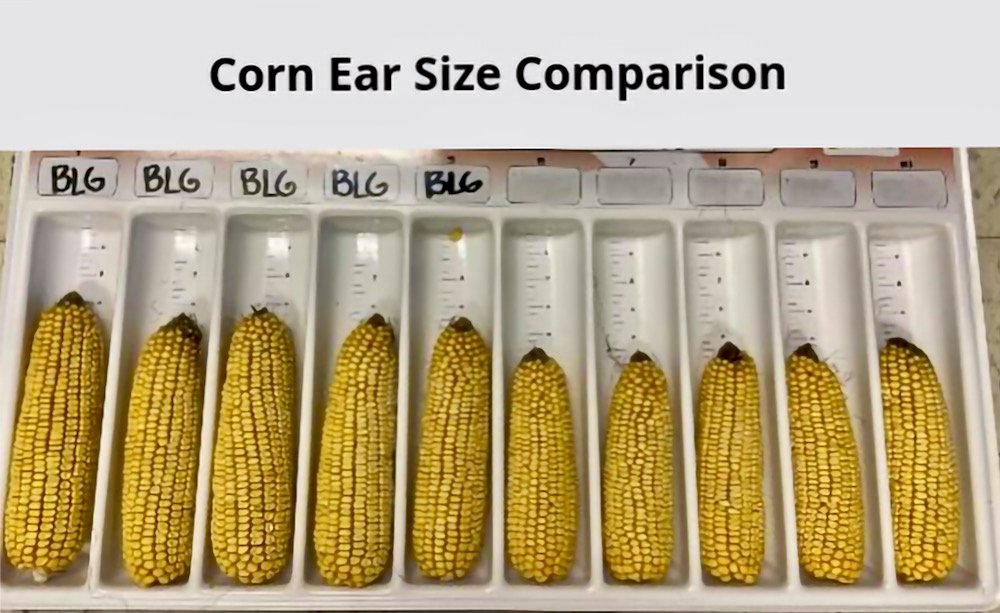Fulvic acid produced from mushroom compost

As the focus on soil health and environmental sustainability grows, new products can help farmers improve their soil as well as boost crop nutrient and water use.
BioLiNE Corp., located near Alvinston in southwestern Ontario, is producing biostimulants — products that when applied to crops, stimulate the plants’ natural processes. It was founded in 2016 by Ray McDonald of CanGrow Crop Solutions to market a new process that creates fulvic acid using spent mushroom substrate.
Humic and fulvic acids are part of soil organic matter stemming from the decomposition of plant, animal and microbial residues. Fulvic acids are traditionally produced by melting and treating leonardite or brown coal.
Humic substances are an essential ingredient of all fertile soils and typically, fulvic acids are the most mobile and susceptible to erosion and leaching losses. This has impacted the availability of fulvic acid in soils, according to BioLiNE’s Mohammad Rahbari.
“The number one benefit of supplementing the crop is that you are replenishing right where the crop needs it with something the soil is missing and this helps improve the ability of the plant to take nutrients in and grow efficiently,” Rahbari explains.
BioLiNE has developed a proprietary process to extract fulvic acid from spent mushroom compost, the peat-based material mushroom farms use to grow their crops, creating a circular economy system by giving new life to a waste product.
“With our purification process, we isolate a very specific chemistry in the fluvic-humic spectrum that is very active, with special chemical features that are active with the plant, so we get better consistency, compatibility and performance,” Rahbari adds. “Our process is more sustainable for producing fulvic acid.”
The company started production in 2018, and markets its fulvic acid product to growers, retailers, and formulators in Canada and the Eastern United States for use in corn, wheat, canola, soybean, cotton, potatoes and other horticulture crops. It is compatible with pest management and fertilizer products, so application can be integrated into existing field passes.
To date, more than one million acres have been treated with the product in Canada and in the U.S. from the Great Lakes down to Florida and into the Midwest.
Les Widmer and his team of W&A Crop Solutions, an agronomy and crop consulting services company in Gibsonburg, Ohio, were one of the first to trial BioLiNE back in 2017. Many of the company’s customers in northwestern Ohio and southern Michigan are commercial growers of tomatoes, peppers, cabbage, cucumbers, pumpkin, squash and strawberries who also grow corn, soybeans and wheat.
“We are in the Lake Erie watershed so there is a lot of emphasis on water quality and making sure we are reducing fertilizers getting into water to control the Lake Erie algae problem,” Widmer says. “We are doing a lot of work with soil biologicals, and what we can do to improve the soil life.”
Widmer was introduced to BioLiNE through one of his suppliers, CanGrow founder Ray McDonald.
“What we saw with BioLiNE was the percentage of active fulvic was quite a bit higher, and it was very pure and very clean,” Widmer says, adding the product was versatile enough he had no difficulties mixing it with different chemistries, additives, and fertilizers for application.
The fulvic acid helps plants more efficiently absorb whatever is being applied to the crop, and Widmer has been so impressed with its performance that he now rarely applies anything without adding BioLiNE. And the product is priced in a way that it doesn’t result in a lot of extra costs for growers, he says.
“We’re comfortable in saying we feel it is a benefit to the customer in getting more efficiency from the main product we are using, to the point where we can actually use less of the element like zinc or manganese with the BioLiNE and still get the kind of results we’re after,” he adds. “To us, it’s an additive that improves whatever it is we’re trying to achieve with the plant.”
Source: Farmtario.com

